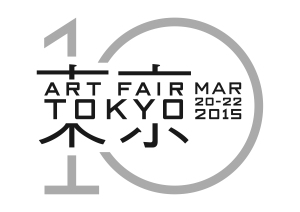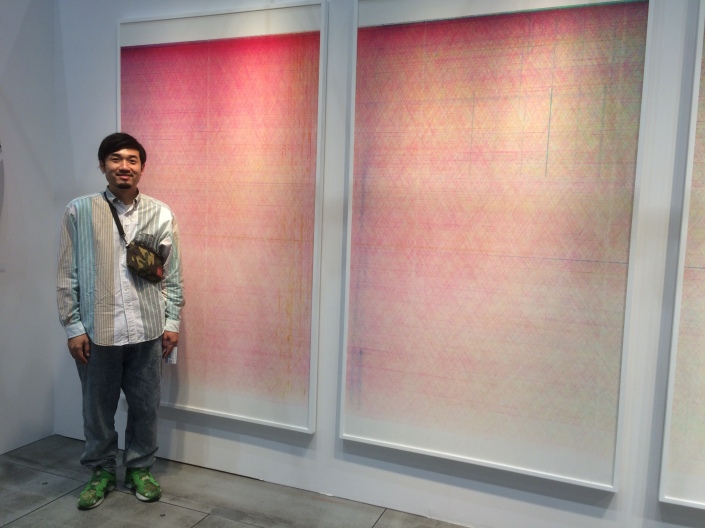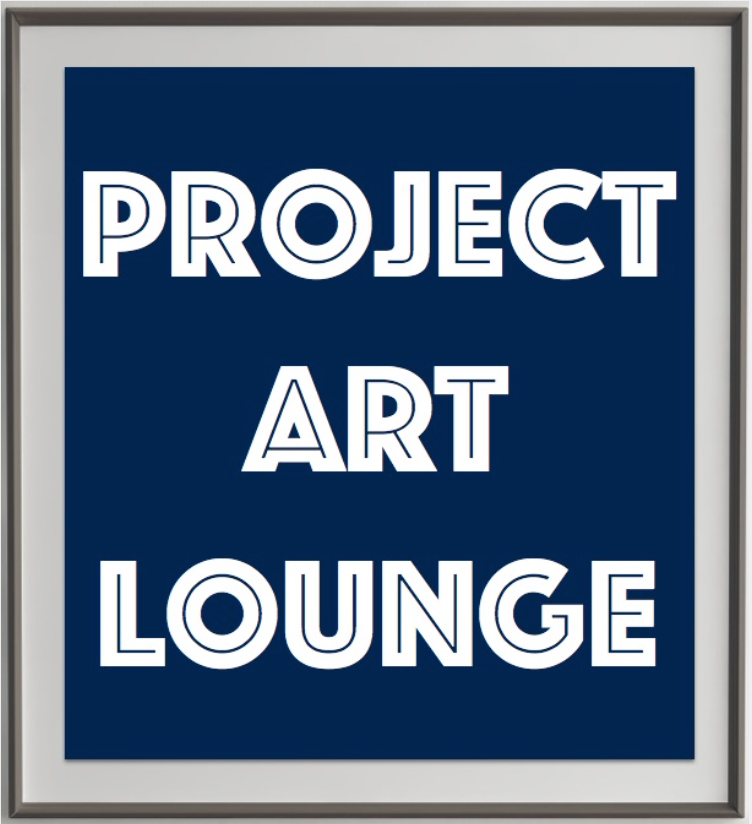Art Fair Tokyo
After Art Fair Tokyo – Timing is Everything
 It’s been two weeks since Art Fair Tokyo closed on March 22. Time enough to reflect about the importance of “Japan’s largest art fair” in the contemporary art world. By the fair’s own accounting, this year’s 10th anniversary was a big success, with 55, 000 visitors and 160 exhibitors participating.
It’s been two weeks since Art Fair Tokyo closed on March 22. Time enough to reflect about the importance of “Japan’s largest art fair” in the contemporary art world. By the fair’s own accounting, this year’s 10th anniversary was a big success, with 55, 000 visitors and 160 exhibitors participating.
Art Fair Tokyo came on the heels of Art Basel Hong Kong, which was moved up from May to March. Preview night on March 19th was particularly well attended, with many international visitors. PR & Communications head Yoshiko Nawa admits that the Art Fair Tokyo may have received a welcome boost of international fair goers traveling from Hong Kong to Tokyo.
That being said, Art Fair Tokyo is very different from other prominent art fairs in Asia and around the world. Importantly, it strikes a different balance between contemporary and more classical art forms. Divided into two sections, the larger north wing featured some 90 galleries exhibiting antiques, traditional and modern Japanese art, including contemporary glass and ceramic works representative of the “unique and rich expression techniques in Japan crafts”.
Some exhibitors such as galerie nichido did include a contemporary section in their north wing booth, but when asked about their location, several gallerists said they would prefer to be among their contemporary colleagues located in the south wing of the fair.
The south wing featured some 40 contemporary art galleries, with good examples of what the Japanese contemporary scene has to offer. Aside from some anime and manga-esque art forms which are better suited to Tokyo’s other “popular art fair” Design Festa, Art Fair Tokyo’s focus is more on artworks with international appeal. With the exception of the gallery “waitingroom” and Deutsche Bank’s presentation of works by Venice Biennale’s last Japan representative Koki Tanaka, conceptual art was notably underrepresented at this year’s Art Fair Tokyo. Some Japanese galleries exhibiting in Hong Kong, such as Take Ninagawa and Murakami’s Kaikai Kiki, were also missing at Art Fair Tokyo, suggesting perhaps that the tough logistics of two shows back to back meant choosing one of the other.
 From its inception 10 years ago, Art Fair Tokyo has taken great effort to put contemporary art in historical perspective along side traditional Japanese art. This year’s “Artistic Practices” section was no exception. Rasa Tsuda, Japan media consultant for Ocula and AZITO founder, took members from the expat organization InterNations on a tour of the artistic practices section, featuring examples of “mono-ha” from the 1970s and contemporary renditions of the 17th century Rinpa school under the title “Pop Rimpa / Rimpa Pop. As important as these works are to maintaining the identity of Japanese art, the fair’s continued success in the international art world may depend upon a giving young innovative Japanese galleries and artists a larger voice in the fair’s development.
From its inception 10 years ago, Art Fair Tokyo has taken great effort to put contemporary art in historical perspective along side traditional Japanese art. This year’s “Artistic Practices” section was no exception. Rasa Tsuda, Japan media consultant for Ocula and AZITO founder, took members from the expat organization InterNations on a tour of the artistic practices section, featuring examples of “mono-ha” from the 1970s and contemporary renditions of the 17th century Rinpa school under the title “Pop Rimpa / Rimpa Pop. As important as these works are to maintaining the identity of Japanese art, the fair’s continued success in the international art world may depend upon a giving young innovative Japanese galleries and artists a larger voice in the fair’s development.
As the dust settles after this year’s exhibition, organizers and curators of Art Fair Tokyo will begin to think about next year’s 11th edition of “Japan’s largest art fair.” Among the 16 art fairs every year in March, Tokyo deserves a bigger share of voice. The inclusion of more media arts like the “Senseless Drawings” by YAMAGUCHI Takahiro (a.k.a yang02) is one area where Art Fair Tokyo can develop a unique focus, while representing an important evolution in the Japanese art world. Adding more english speaking tours – like the one offered by Rasa Tsuda – and more english speaking programming for international visitors would certainly help.

